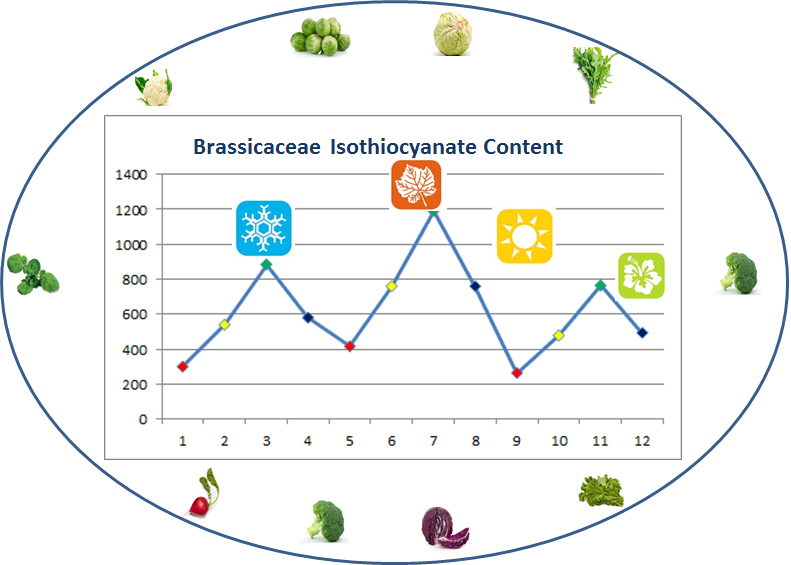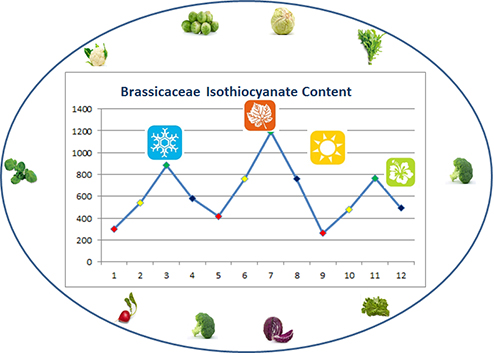Seasonal isothiocyanates variation and market availability of Brassicaceae species consumed in Mendoza
Palabras clave:
Crucíferas, isotiocianatos, disponibilidad, variación estacional de fitoquímicosResumen

Along with the recommendation of a healthy diet, it is suggested to increase the consumption of fruits and vegetables. Among the latter, Brassicaceae species are preferred, because they show many phytochemicals mainly belonging to the isothiocyanates (ITCs) family compounds, with proven activities related to the prevention of chronic diseases and cancer. A survey about seasonal availability and phytochemical levels of Brassicaceae species in the total of vegetables marketed in the province of Mendoza (located in the centre west of Argentina) was done. Results throw that Brassicaceae vegetables are an important part of Mendoza vegetable market reaching up to 23% of the vegetables commercialized. Regarding ITCs content, watercress and rocket were the vegetables with the highest ITCs levels, being, therefore, the most promising vegetables studied herein by their potential functional activities. Finally, high levels of variation (up to 10 times) on ITCs content along the year in a single species were found. These facts should be considered when designing Brassicaceae species phytochemical characterization assays to achieve more reliable results. This work represents the first report of Brassicaceae availability and seasonal phytochemical variability in local conditions.
Highlights
-
High levels of variation (up to 10 times) on ITCs content along the year in a single Brassicaceae species were found.
-
Brassicaceae vegetables are an important part of Mendoza vegetable market reaching up to 23% of the vegetables commercialized.
-
Considering ITCs content, watercress and rocket were the vegetables with the highest ITCs levels.
Descargas

Descargas
Publicado
Cómo citar
Número
Sección
Licencia
Aquellos autores/as que tengan publicaciones con esta revista, aceptan las Políticas Editoriales.










.jpg)




